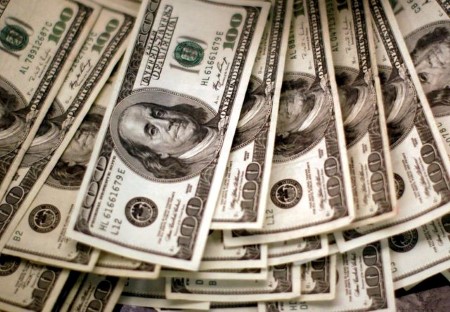




Philippines Trade Update: Trade trajectories trend along
 DOWNLOAD
DOWNLOAD

Policy Rate Updates: Double cut finale
 DOWNLOAD
DOWNLOAD

Monthly Economic Update: One for the road
 DOWNLOAD
DOWNLOAD


Dollar gains as investors see Fed stance likely unchanged; euro, sterling fall

NEW YORK, Oct 5 (Reuters) – The dollar rebounded from recent weakness on Wednesday as investors viewed the US Federal Reserve’s aggressive stance on interest rates as likely unchanged, with the euro and sterling down at least 1% each.
The euro was down 1% at USD 0.9892, and was set for its biggest daily percentage slide since Sept. 23, after rising 1.7% on Tuesday.
Sterling was down 1.1% at USD 1.1344 after rising for six straight sessions. Its fall extended slightly as UK Prime Minister Liz Truss pledged to bring down debt as a share of national income, just over a week after the government’s plans to slash taxes and ramp up borrowing spooked markets.
Adding to the pressure on the pound, data showed Britain’s private-sector economy last month suffered the sharpest contraction in activity since a COVID-19 lockdown early last year.
A dollar index measuring the greenback against a basket of currencies was last up about 1%. On Tuesday, it had its biggest daily percentage decline since March 2020.
Recent gains for most major currencies against the dollar have been underpinned by hope among investors and traders that the Fed will raise interest rates by less than previously expected.
“You had a general risk-on where the euro, sterling really traded well and the stock market gained. I kind of think this is just (investors) exploring a trading range,” said Marc Chandler, chief market strategist at Bannockburn Global Forex in New York.
“The bottom line is the bounce in risk assets is not taking place because of a change in Fed views,” he said.
On Wednesday, the ADP National Employment report showed private employment rose by 208,000 in September, above the 200,000 consensus forecast of economists polled by Reuters, while separately the Institute for Supply Management’s (ISM) non-manufacturing PMI reading came in slightly above expectations.
Also, US Fed Governor Philip Jefferson reiterated overnight that inflation was the top target for policymakers and that growth would suffer in efforts to bring it down.
San Francisco Fed President Mary Daly took a softer line and said the impact of the dollar, which is up sharply this year, on other currencies and economies was a concern.
From here, investors are likely to focus on Friday’s US jobs report, Bannockburn’s Chandler said, which will be watched for clues on the possible trajectory of the Fed’s monetary policy.
In other currencies, the dollar was up 0.2% against the Japanese yen, while the dollar was up 0.4% at 7.0676 against China’s offshore yuan. Chinese authorities have come out in recent weeks with maneuvers to slow the yuan’s slide.
A fifth consecutive 50-basis-point rate hike from the Reserve Bank of New Zealand (RBNZ) on Wednesday reminded investors that inflation remains the main focus of central banks.
The New Zealand dollar was last up 0.1% at USD 0.5744, having jumped as much as 1.3% earlier in the session. The Aussie dollar was near flat at USD 0.6502.
(Additional reporting by Harry Robertson in London. Additional reporting by Tom Westbrook in Sydney; Editing by Bernadette Baum and Jonathan Oatis)
This article originally appeared on reuters.com





 By Reuters
By Reuters